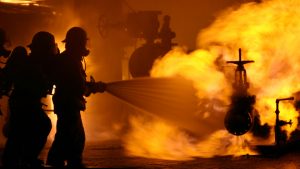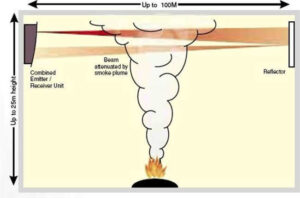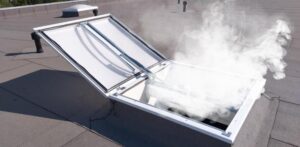Welcome to the RM Risk Management Blog
This is the area for all things RM news related

Is the UK prepared for the changes from Martyn’s Law once it becomes law?
Martyn’s Law aims to enhance public safety and organisational preparedness across the UK by mandating certain measures for venues and events to mitigate the impact of terrorist attacks. Martyn’s Law is expected to apply to anyone responsible for publicly accessible locations used for entertainment and leisure, retail, food and drink, museums and galleries, sports grounds, public areas of local and central government buildings (e.g., town halls), visitor attractions, temporary events, places of worship, health, and education. Here are steps businesses can take to prepare for compliance. Although no date has yet been set for the introduction of the legislation, we strongly advise that you review the requirements as soon as possible just in case adaptions and changes are required, including training. What Martyn’s Law will require you to do The government has indicated that publicly accessible locations with a capacity of more than one hundred people will need to […]
Read More
What is a DSEAR Risk Assessment?
A DSEAR risk assessment process involves classifying substances as either non-hazardous or hazardous before deciding what controls need to be put in place. A DSEAR risk assessment can help identify any risks associated with your work situation so you can reduce them. Duty holders must comply with DSEAR by identifying hazards associated with their work, assessing risks, and implementing appropriate control measures. A DSEAR Risk Assessment is mandatory for most workplaces dealing with hazardous substances, regardless of whether they intend to work with them. Businesses falling into the following categories must complete DSEAR risk assessments: Manufacturing other explosive products (e.g. fireworks) Operating an Explosives Storage Facility Working at height with a fall arrest system Handling flammable liquids in large quantities (more than 200L) Working with compressed gases in large containers (more than 500kg) If you are uncertain about falling within these categories, it is advisable to consult with an […]
Read More
AXA UK Advises London Businesses to Review Fire Risk Assessments
AXA Commercial, a division of AXA Insurance UK plc, is urging London businesses to reassess their fire risk assessments and employee training following the London Fire Brigade’s (LFB) announcement that, starting in October, it will no longer respond to daytime activations of automatic fire alarms in most non-residential buildings. In the year leading up to March 2024, the London Fire Brigade (LFB) responded to 52,000 false alarms triggered by automatic fire alarms. Starting in October, and as noted by Fire Safety Matters, the LFB will not respond to automatic calls between 7:00 am and 8:30 pm to alleviate the strain on Fire and Rescue Service resources. “The London Fire Brigade’s decision is in line with the stance taken by many other Fire and Rescue Services across the UK,” explained Dougie Barnett, director of customer risk management at AXA Commercial. “It’s crucial […]
Read More
Non-Compliant Passive Fire Installations – A One Off or A Worrying Trend?
Last week, we were engaged by the end client to spot-check the passive fire controls during the refurbishment of a large office complex. Our role was to ensure that the work carried out was consistent with the requirements agreed upon in the fire strategy and relevant standards and that the quality of work satisfied the functional requirements of the Building Regulations. In our report, we highlighted that the project encountered several challenges. We believe unqualified contractors were responsible for installing life safety elements, leading to potential risks for future building occupants. Additionally, a concerning number of inadequately installed passive fire protection elements were identified, which will need to be addressed and cause significant delays, plus additional costs to the project. Sadly, when discussing with the contractors, the workers carrying out the project were […]
Read More
Understanding the Differences Between Active and Passive Fire Protection Systems
Every building needs both active and passive fire protection systems to maximize protection. These two systems work together to stop and contain the threat of a fire. While each system can be effective alone, they offer the best-combined protection. An active fire protection system means some action is being taken. This action can be manual, meaning that a person or people may engage in it, or it may be automatic, activating once fire, smoke, or heat is detected. Active systems are mainly designed to combat the fire and work to help extinguish it directly. An example of an active fire suppression system is what the fire department will use once they arrive. Most buildings also have active systems that can be deployed on-site during a fire. These can include: Smoke detectors, which will activate […]
Read More
What Are The Risks Associated With Asbestos In A Fire?
Asbestos poses a major health risk, causing serious damage to the lungs and respiratory system upon exposure. When damaged by fire, asbestos can present even greater risks. We are examining the risks associated with asbestos and fire to address this issue. One major concern with asbestos and fire is that it was commonly used in building structural components. Materials such as support beam cladding, firebreaks, doors, and ceiling coatings often contain asbestos. While this was beneficial for fire protection due to the strength and heat resistance of asbestos fibres, it also poses significant health risks. The main issue presented by asbestos materials during fires is that the fire destroys the materials containing the asbestos fibres. The breakdown of these materials can lead to a significant release of fibres. Asbestos has a much higher melting point than other construction materials, as shown in the table below. Melting point of fibreglass […]
Read More
Why do you need to provide Fire Doors?
Fire doors are an essential component of your fire safety plan. When used correctly, they can stop fires from spreading throughout a building, enabling people to evacuate safely, providing the fire and rescue service with enough time to arrive, and potentially saving the property. If a fire door is manufactured by a BWF-certified company, with compatible parts, and certified by an accredited third party, it should be able to withstand a fire for 30 minutes or more. Fire doors are specifically designed to withstand fire for up to 30 minutes and, in some circumstances, even longer, depending on the engineering approach taken to a building. They are a legal requirement for flats that open onto communal areas shared with other tenants. This ensures that crucial escape routes are protected if a fire breaks out. They are designed to automatically close behind you in the event of a fire, holding […]
Read More
Are Living Walls a Fire Risk?
Living walls are becoming an increasingly important part of green infrastructure, helping to boost biodiversity in our cities, reduce air pollution, promote well-being, and lay the foundations for a more sustainable future. However, there is a concern about whether they pose a fire risk if not maintained correctly. On June 1, 2022, the government introduced a package of measures to further strengthen and clarify building regulations and fire safety guidance as part of wider reforms to building safety. The update to Approved Document B sets clearer, stronger standards, which in turn sets limits on the combustibility of materials used in the external walls of buildings. The June 2022 update was the culmination of a series of events regarding fire safety compliance requirements for external cladding. Numerous scientific studies confirm that living walls help to clean […]
Read More
What is an Optical Beam Smoke Detector?
The most common type of smoke detector is the optical point detector. It contains an infrared light beam projected across a small sensing chamber inside the device. When smoke enters the sensing chamber through the outer holes in the detector’s body, it affects the infrared beam, triggering the device into alarm. The alarm alerts individuals to a fire. Optical beam smoke detectors work on a similar principle, but instead, the infrared light beam is projected across the open area of a building. This effectively transforms the entire building into the sensing chamber. The optical beam detects smoke along the entire beam path, helping to detect fire early and prevent further damage. How does optical beam detection work? When smoke passes through an invisible infrared beam, the solid particles and liquid droplets in the smoke reflect and scatter the photons […]
Read More
Smoke Vents and the Importance of Regular Maintenance
Smoke ventilation systems are essential in protecting people and property from the harmful effects of a fire, making them an integral part of a building’s fire safety strategy. These systems go by different names, such as smoke control systems or automatic opening vents (AOVs), but their purpose remains the same – to expel smoke, fumes, and heat out of a building in the event of a fire. Given their critical role in fire safety, maintaining these systems correctly is crucial to ensure the safety of a building and its occupants. How do Smoke Vents work? Smoke ventilation systems play a critical role in fire protection for buildings with more than three floors. In such buildings, the primary cause of fatalities during a fire is not the fire itself but smoke, which reduces visibility and makes evacuation challenging for occupants and fire service […]
Read More